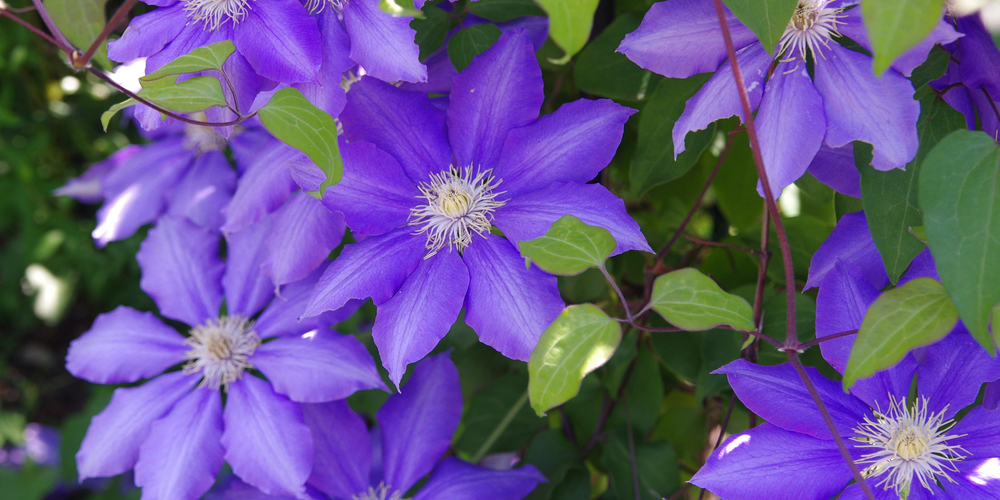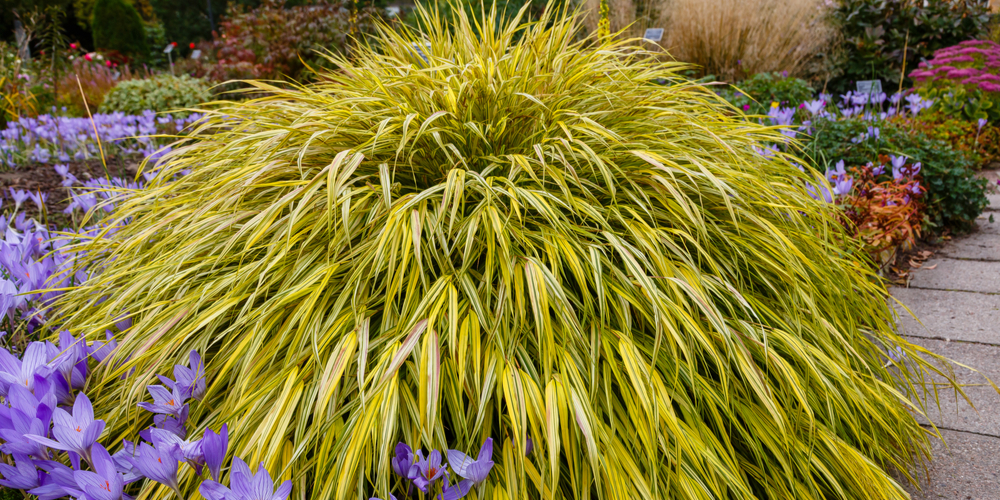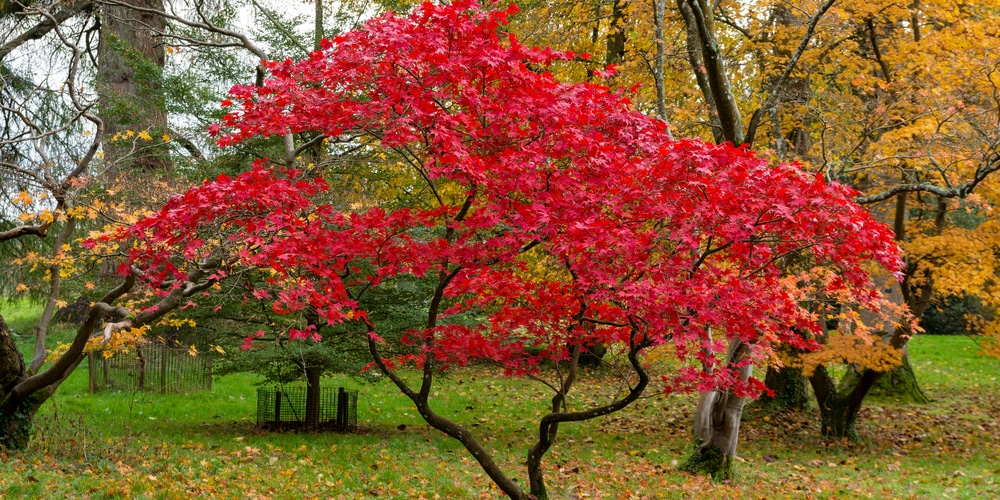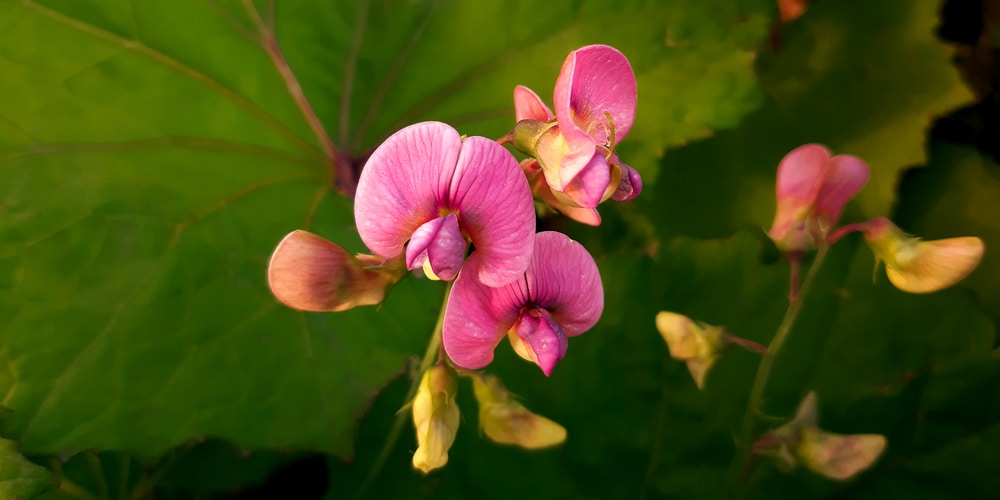Clematis or Clematis spp. are perennial vines that add height to the garden with colorful, frequently fragrant flowers. They’re attractive climbers that are also versatile, as you can grow on walls, container supports, pergolas, and arches. You can enjoy Clematis mostly all year long – discover Clematis in every season.
Its root system needs sufficient room for healthy growth — and, despite popular belief, need not require shelter — so make sure every plant is appropriately spaced to avert congestion at the bottom.
Clematis prefers moist, properly-drained soil and partial or full sun. Shade the ground with other crops or place gravels or flat rocks at the foundation to provide a nice root run. They also thrive in containers.
Clematis and other plants that grow well together

Clematis goes well with various plants, such as annuals, trees, perennials, roses, shrubs, among others. There seem to be thousands of Clematis varieties to select from; combine them with other plants to contrast or compliment them or by using them to lengthen the other plants’ season.
Because Clematis is a perennial herb that returns every year from its root system, planting other perennial crops at the bottom of the plant trellis is a natural fit. Clematis companion plants that thrive at the foundation of the clematis trellis include sea holly (Eryngium) and “Morning Light” maiden grass (Miscanthus Sinensis “Morning Light”).
You can grow Morning light maiden grass in USDA plant hardiness zones 5–9. At the same time, you can grow Sea holly in USDA plant hardiness zones 4–8.
Grasses
In a border, combine ornamental grasses with Clematis and perennials for a modern style.
Japanese maple
Once allowed to usually weave their path among the woody ornamentals branches like Japanese maples, clematis vines establish a spectacular impact (Acer palmatum). They are slow-growing crops that, depending on the variety, can be grown in USDA plant hardiness zones 5-8.
Both can be developed in higher elevations with moderate summer temperatures. You can train Clematis against the edge of more enormous trees in the landscape, as long as the location receives about six hours of sunlight each day. It will give you a naturally beautiful clematis trellis that will last all summer.
Roses
Roses are yet another excellent choice for sowing at the bottom of a clematis; they’re long-flowering and challenging. They mainly work well in regions where the Clematis is exposed to the elements.
The classic combination of Clematis and roses is one of the most popular. Pick varieties that bloom at the same period and are of equal size for maximum effectiveness. Consider trimming times as well; ideally, you should be in a position to prune the rose and Clematis at the same time. Climbing roses are preferred over ramblers that grow extremely large and require different pruning than Clematis.
Annuals
You can also grow Clematis alongside annual crops at their foundation, which is an excellent idea for pots. Clematis Florida’ Flore Pleno’ can be paired with Nicotiana alata’ Lime Green’.
Annual flowers provide year-round color in the yard, making them perfect for use in regions where you desire a focal point. Clematis roots do not need to be shaded by plants. Annual flowers with mature heights or leaf textures that enhance Clematis include larkspur (Consolida ambigua), cosmos, and flowering sweet peas (Lathyrus odoratus). An annual flowering plant blooms, build seeds, and dies in the same growing season.
Vegetables that thrive in the shade
Choose plants that will match your particular clematis varieties rather than those that will shelter the roots of your Clematis. The combination of edible and ornamental plants creates a pleasing impact.
Clematis roots don’t need to be shaded by these plants; on the contrary, the Clematis can provide shade.
Clematis companion plants: Take away
Clematis companion crops should have flower colors that contrast or complement the plant’s flowers or bloom at various times to prolong the flowering period. Clematis can be grown in USDA plant hardiness zones 5-9.
Now that you’ve discovered several plants that would go very well with Clematis, and you can use them to cover walls, pergolas, fences, and arches, it’s time to jump into the trend.
Related Article: Vines That Grow on Trees
Sources
https://www.learningwithexperts.com/gardening/blog/top-tips-for-success-with-clematis
https://www.gardenersworld.com/plants/what-to-grow-with-clematis/
https://homeguides.sfgate.com/isnt-clematis-blooming-90385.html



